Summer Muskies Love Bucktails
Category: article
Aug 4th, 2021 by Keith Worrall
Modified Aug 4th, 2021 at 5:05 PM

Summer Muskies Love Bucktails
Dr. Jason Halfen
Summer is the perfect time to churn the water with bucktails. Water temperatures are approaching their annual peaks, and muskies are on the chew, ready to chase down fast-moving presentations. Your hunt for summer muskies will begin with weeds, and it’s likely that you won’t need to look further than your lake’s dense beds of cabbage and coontail to garner all of the summer musky action you’ll ever need. Let’s examine the connection between weeds, in-line spinners, and summer muskies, so you can put more of these apex predators in the boat this season.
Of all the possible weed types found in musky waters, cabbage weeds and coontail will attract and hold the most fish. Cabbage grows with stout vertical stems, interrupted regularly by long, broad leaves. Coontail is somewhat less robust but grows in beds that are more dense than cabbage, and the overall cylindrical shape of a coontail stalk provides many of the same musky-attracting characteristics as cabbage. Indeed, both weeds cast shade within the water column, reducing local water temperature and providing respite from the bright midday sun. Dense stands of cabbage and coontail provide ample cover for baitfish and small panfish, guaranteeing that resident musky and pike have an abundant food supply.
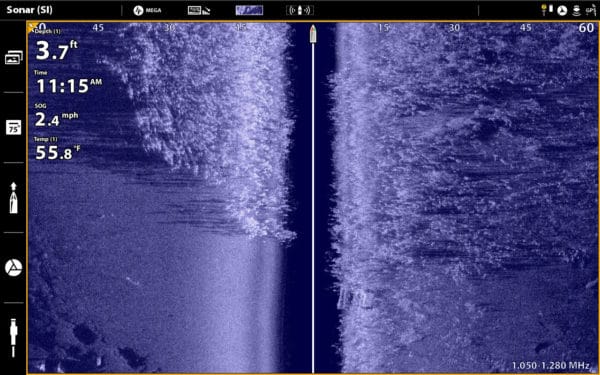
Well-honed sonar interpretation skills will help an angler to identify the best weeds for summer musky fishing. Indeed, cabbage and coontail reveal themselves in excellent detail in Humminbird’s MEGA Side Imaging: cabbage weeds frequently have bright returns in Side Imaging, as their large, waxy leaves are excellent reflectors of sonar energy. Moreover, mature cabbage and coontail can both be quite tall, and as a result, cast characteristic, long sonar shadows in Side Imaging. So, if you’ve found a dense stand of weeds with bright Side Imaging sonar returns as well as long, dark sonar shadows, chances are that you’ve located a bed of cabbage or coontail that may hold summer muskies.
If you haven’t yet added Side Imaging to your bag of fish-finding tricks, consider using an underwater camera to confirm weed identifications and focus your musky fishing. The Aqua-Vu Micro Revolution Pro 5.0 camera is a compact underwater camera system that fits into any musky angler’s boat – and budget. The camera’s optics provide a crisp underwater video feed in clear to moderately clear waters and do an excellent job of identifying both structure and fish. The Aqua-Vu Micro Revolution features a long-lasting lithium Ion battery system to power many musky hunting trips and includes an integrated cable management system that makes deploying and stowing the optics quick and easy. For an ultra-clear, HD-quality video feed, consider the larger Aqua-Vu HD10i Pro Gen 2 camera system, which will also function better in deep water and in those musky haunts with more noticeable stain – places like Minnesota’s Lake of the Woods, or tannin-stained waters of Wisconsin’s famous Chippewa Flowage.
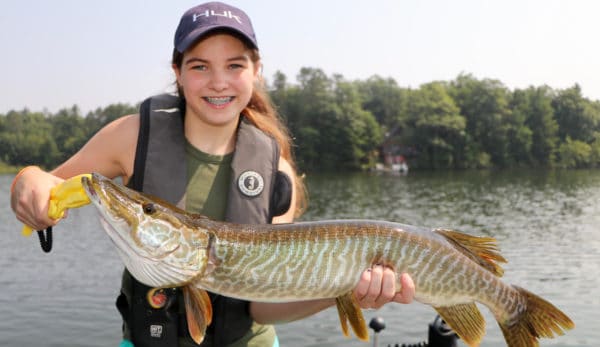
In-line spinners fall into one of two broad categories: lures with a single spinner blade, and lures with tandem blades. Both lure styles can be fished slow or fast, but be prepared for the tandem-blade spinners – like the well-known Double Cowgirl from Musky Mayhem Tackle – to pull back hard as you wind them in. Spinner blade size and shape will determine the retrieve speed at which the lure performs best, as well as the amount of thump and vibration the rotating blade creates as it spins about the lure’s axis. Long, slender willow leaf blades function best at high speeds and displace the least amount of water, producing more flash but less thump. At the same time, Colorado-style blades are typically associated with slightly slower presentations: crank these too fast, and the spinner may “blow-out”, no longer rotating smoothly around the lure’s wire backbone. Big Colorado blades move a lot of water as they spin and distribute the most vibration into the water column. Look for the amount of thump from a spinner blade to increase as its size increases – as well as the amount of effort needed to retrieve the lure through the water.
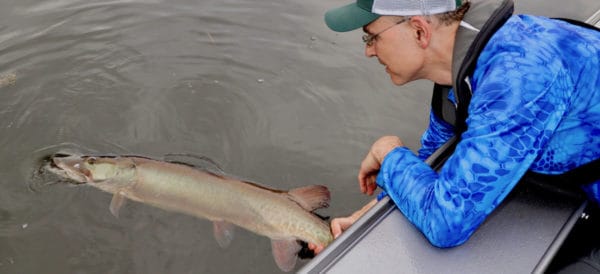
With so many sizes, shapes, and combinations possible, how does an angler choose a good musky bucktail? In my experience: sparse cover, shallow water, and extreme retrieve speeds call for spinner with willow leaf blades, while dense cover, slower retrieve speeds, or fishing after dark call for big Colorado single- or tandem-blade spinners. When it comes to color, I like to keep things simple: black tails and with silver or gold blades are great for clear water. Brighter, more colorful combinations – like yellows, oranges, or flashy mylar skirts – get the call in stained or turbid water.
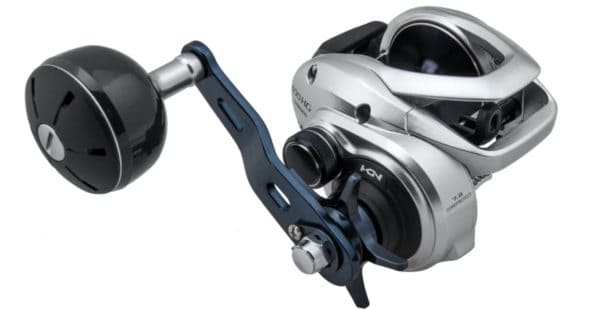
Musky fishing calls for stout tackle. Twenty-first century musky anglers with an eye toward conservation select fluorocarbon leaders when chasing Esox, eschewing the antiquated practice of using a wire leader to prevent bite-offs. Strong yet supple fluorocarbon leaders feature the abrasion resistance needed to withstand a mouthful of sharp teeth, while also protecting the musky’s body, eyes, and slime coat as it rolls during the battle. Couple a three- to four-foot 100 pound test leader to a stout braided main line, like 80 pound test PowerPro spooled on a 7.6:1 Shimano Tranx 400 to really get those blades turning. A good trick for the line-leader junction is to thread a small plastic bead, perhaps ¼-inch in diameter, onto your main line before you tie on the leader. The round bead will prevent weeds from hanging up on the leader’s swivel and will also keep the swivel from hitting the rod’s tip guide when you reel up and start your figure 8.
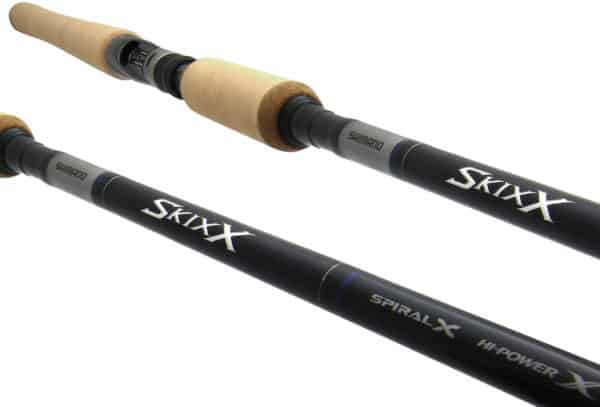
It’s critically important to keep an eye on your lure as it approaches the boat, and to transition smoothly into a figure 8 – on every cast – to trigger following fish. A longer rod, like the 8’6” heavy power, fast action Shimano SKIXX will facilitate this transition and allow you to make wider, sweeping turns in your boatside presentation. The Shimano SKIXX is also a powerful tool for setting the hook and keeping muskies pinned during the battle. Be sure to keep a musky-grade net handy, and always carry a good set of release tools to minimize fish damage and make healthy releases more likely. The future of musky fishing depends on it!
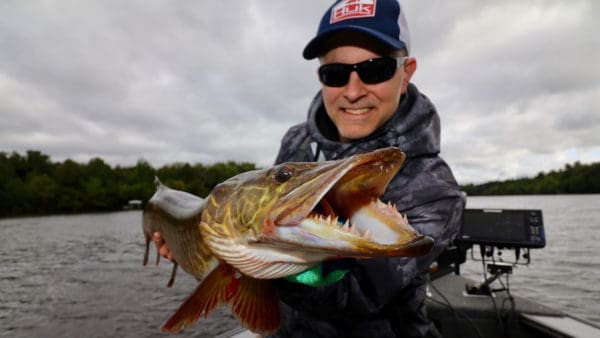
Dr. Jason Halfen is a long-time guide, tournament angler, and specialist in marine electronics. He owns and operates The Technological Angler, dedicated to teaching anglers to leverage hi-tech tools to find and catch more fish. Learn more by visiting www.technologicalangler.com.